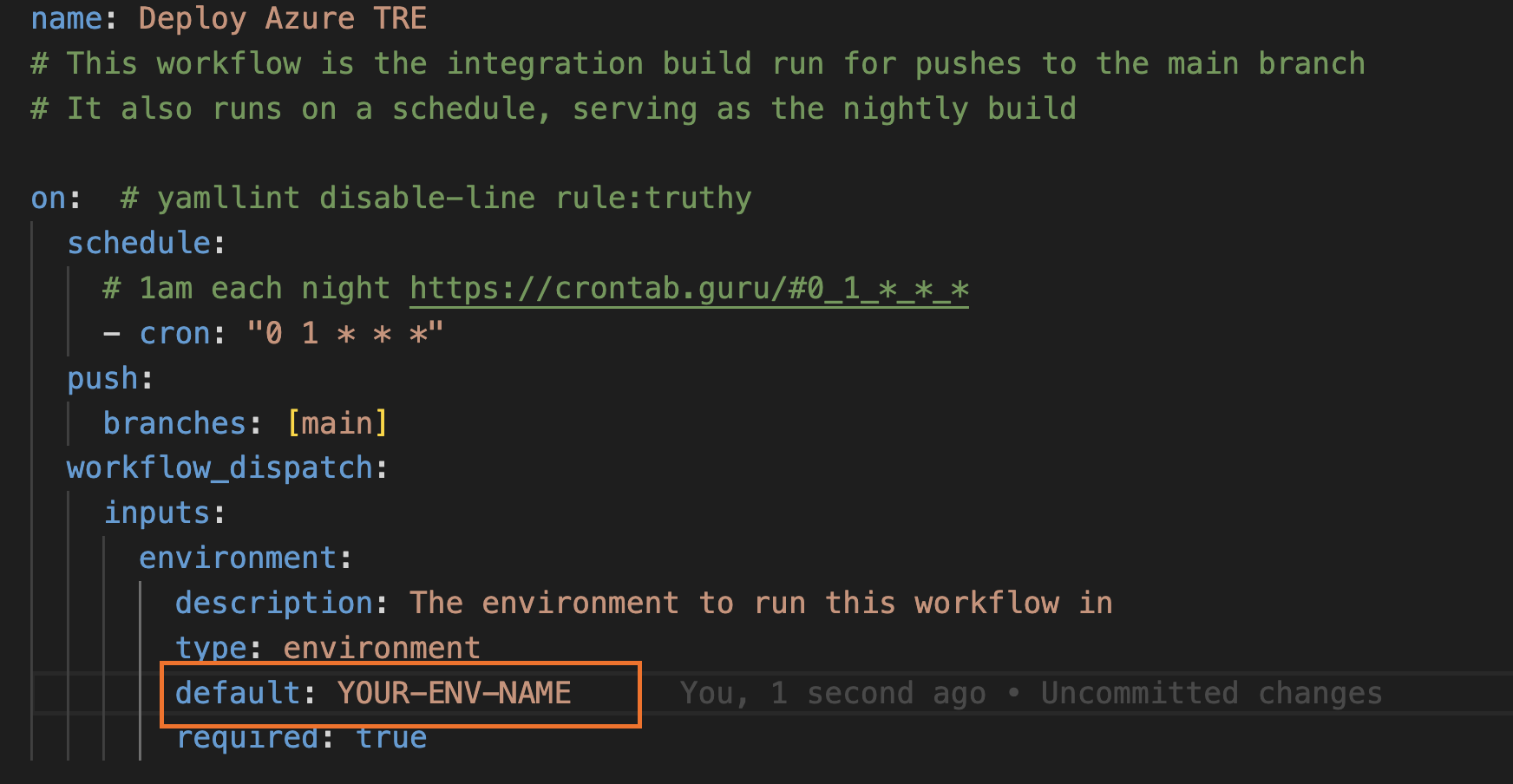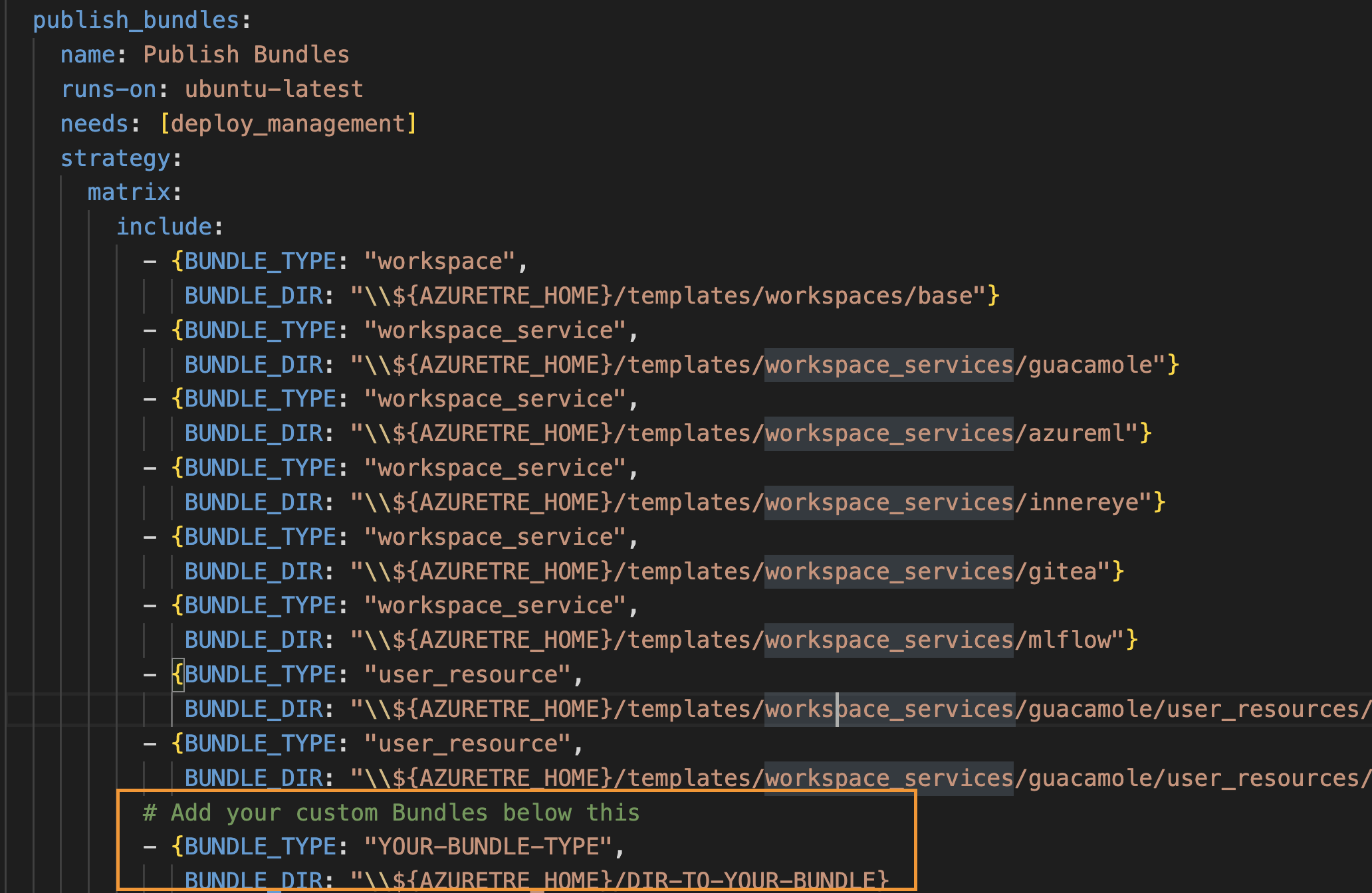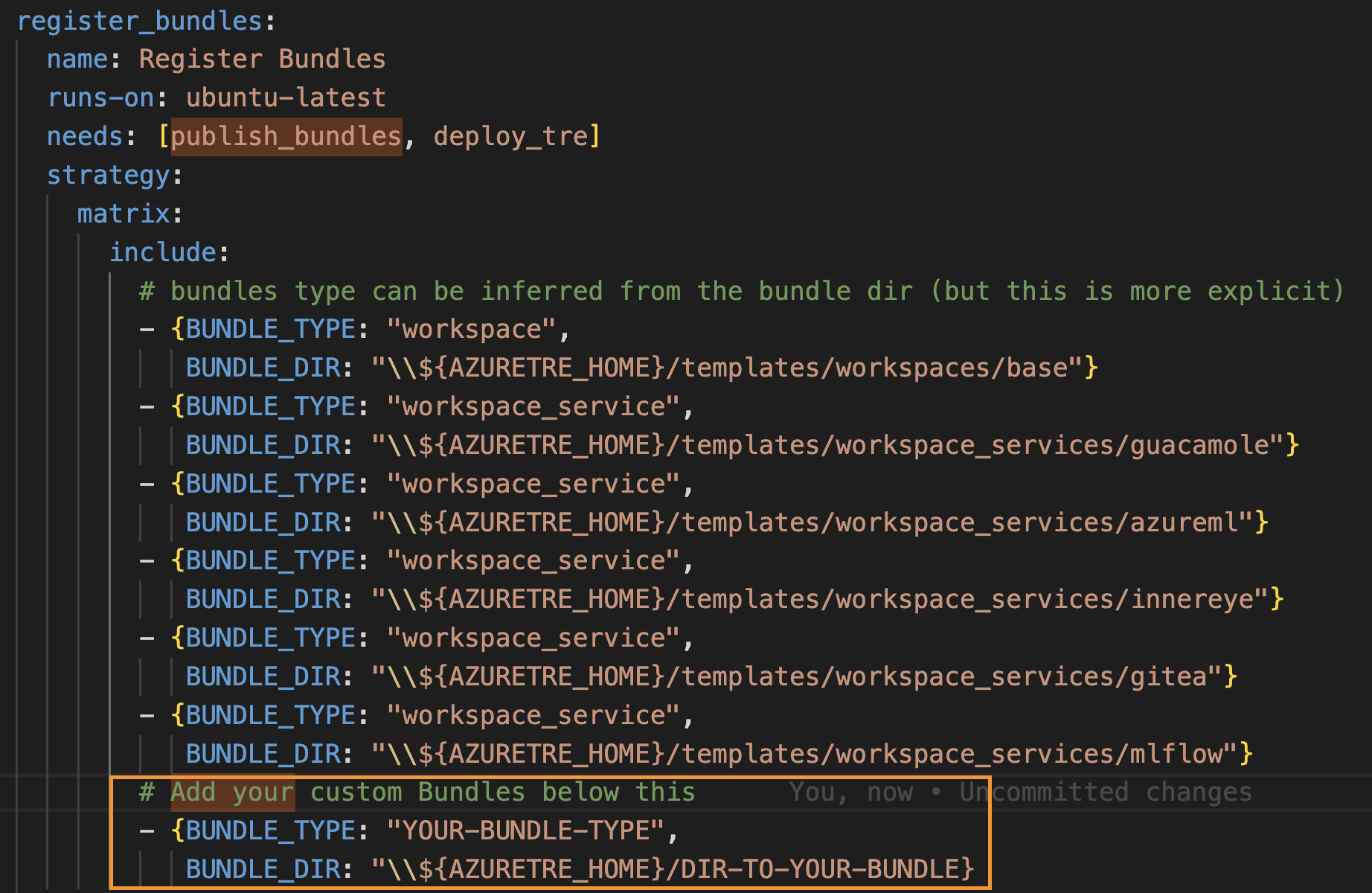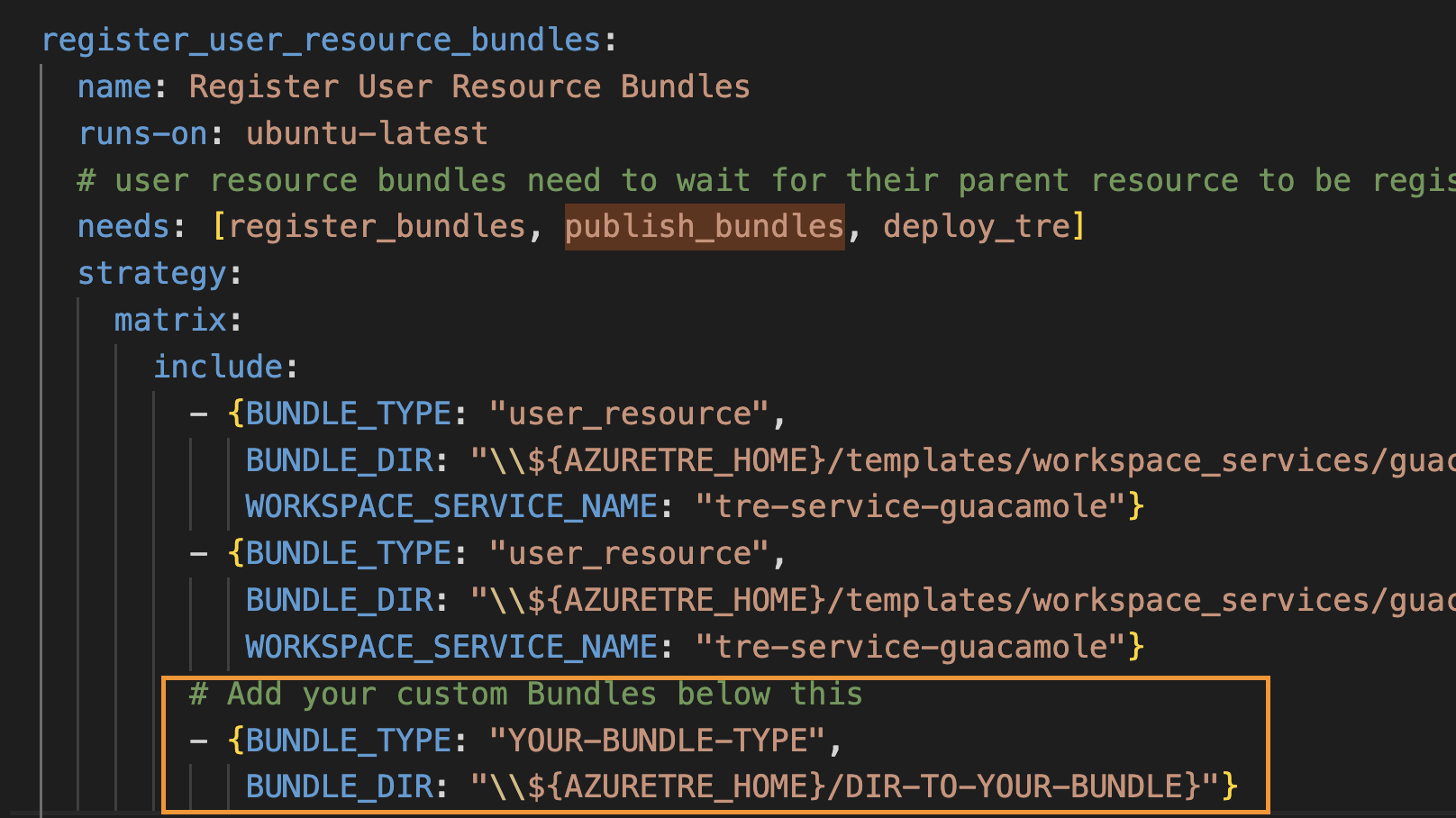Pipelines
The AzureTRE deployment repository contains the following github workflows:
- Build Validation - validates the code by running linter and terraform validation.
- Clean Validation Environments - a periodical workflow to clean unused AzureTRE environments.
- Deploy Azure TRE (branch) - This workflow is intended to be used to test workflow changes. It deploys AzureTRE using the workflows defined on the branch
- Deploy Azure TRE - This workflow is the integration build run for pushes to the main branch. It also runs on a schedule, serving as the nightly build to keep the main AzureTRE env in sync.
- Deploy Azure TRE Reusable - responsible to deploy AzureTRE. It is referenced in other Azure TRE deployment workflows.
Setup Github Environment
The workflows are using Github environment to source its environment variables. Follow this guide to define it in your github repository and provide it as an input for the workflows.
The following environment variables should be defined in your github environment:
Having all the environment variables set in the Github environment the next step will be to use it in your pipelines:
In AzureTRE deployment repository You will find all the pipelines under the folder .github/workflows on top of each workflow there is the workflow
inputs part where the used Github environment name is set, make sure to update it with yours, for example:

Publish Custom Templates in Pipelines
If you have created custom AzureTRE templates you can publish and register them as part of the CI/CD pipelines.
To do so go to .github/workflows/deploy_tre_reusable.yml workflow and add your template under the following jobs:
- publish_bundles

- register_bundles

- If it is a user resource add it also under register_user_resource_bundles

How to Contribute to our Documentation
If you have any comments or suggestions about our documentation then you can visit our GitHub project and either raise a new issue, or comment on one of the existing ones.
You can find our existing documentation issues on GitHub by clicking on the link below:
Or, you can raise a new issue by clicking on this link:
Report an Issue or Make a Suggestion
Thank you for your patience and support!